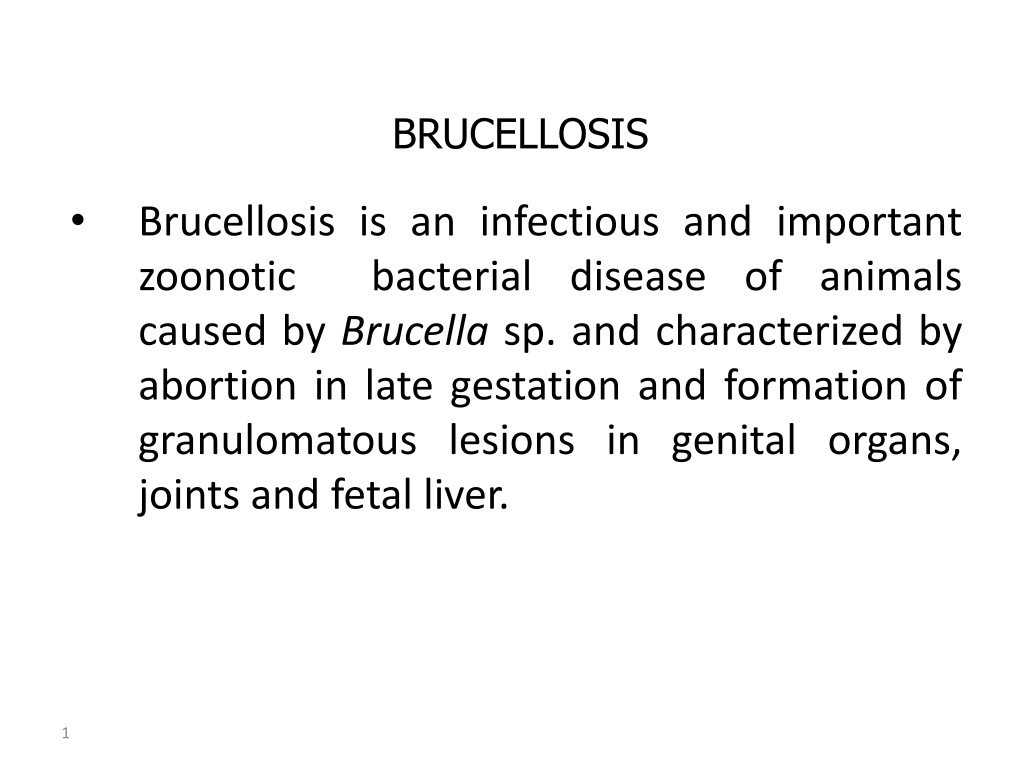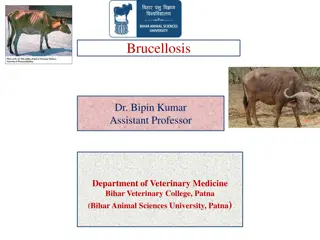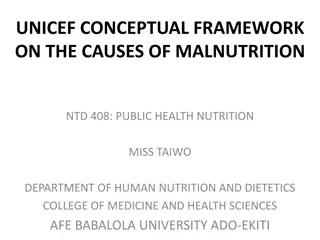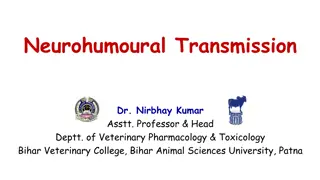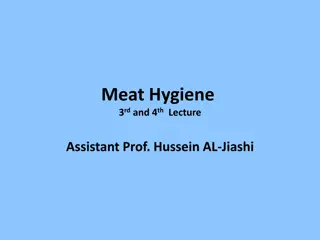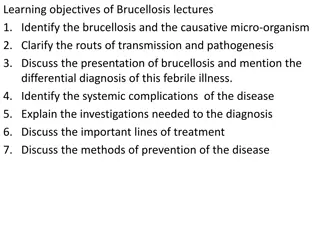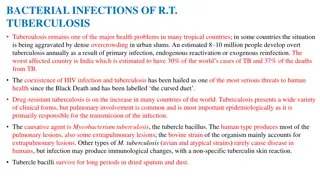Brucellosis: Causes, Transmission, and Control
Brucellosis is an infectious zoonotic bacterial disease affecting animals, characterized by abortion and granulomatous lesions. It is caused by Brucella species and has a rich history of discovery. The disease has multiple species with varying pathogenic strains and vaccines. Brucellosis has resistance to physical and chemical agents but can be prevalent in certain regions. It has many names and affects both humans and animals. The host range includes cattle, buffalo, sheep, goats, and wildlife, with transmission primarily through contaminated food, water, and bodily fluids.
Download Presentation

Please find below an Image/Link to download the presentation.
The content on the website is provided AS IS for your information and personal use only. It may not be sold, licensed, or shared on other websites without obtaining consent from the author.If you encounter any issues during the download, it is possible that the publisher has removed the file from their server.
You are allowed to download the files provided on this website for personal or commercial use, subject to the condition that they are used lawfully. All files are the property of their respective owners.
The content on the website is provided AS IS for your information and personal use only. It may not be sold, licensed, or shared on other websites without obtaining consent from the author.
E N D
Presentation Transcript
BRUCELLOSIS Brucellosis is an infectious and important zoonotic bacterial disease of animals caused by Brucella sp. and characterized by abortion in late gestation and formation of granulomatous lesions in genital organs, joints and fetal liver. 1
Incidence 1863 Marstion was described Brucellosis in the islands of Malto. 1887 Sir Robert Bruce found the bacilli from Spleen of infected soldier. Later on they isolated in the pure cult( Micrococcus mellitensis) 1897 Bange isolated and identification of organism in aborted cow fetuses and fetal membrane & named the organism Brucella abortus. ( Bang Disease) 1913 Traum isolated & identification of Brucella suis in pigs 1951 Bubdle and Boyes isolaed Brucella ovis in rams 1968 Charnecael isolated Bruella canis in dogs
Etiology ( 7 species till now in the world) Brucella abortus ( pathogenic strains in India is 544) in America it is 2308.The vaccine stain in India Cotton strain 19 ( S19). & in America is RB 51. Live vaccine (Br. is an intracellular organism) kill vaccine is not effective. Br. ovis Br. meletensis 16 M in India vaccine strain Rev-1 Br. canis Br. suis Br. neotomiea (wood rat) Br. maris ( marine animal)
Resistance to physical & chemical agents In 60oc temp. for 10 mint the organism can not survive, pasteurization of milk kill the Brucella. Every disinfectant & detergents are lethal to Br. Low pH is lethal to Br & Direct sunlight is lethal. The organism can be store at 4-8oc upto 1 yr.
Prevalence The prevalence of Brucellosis throughout the world. In India, the prevalence rate from 6.6 % in M.P 60% and North Eastern state.
Many Names of Brucellosis Human Disease Animal Disease Malta Fever Undulant Fever Mediterranean Fever Rock Fever of Gibraltar Gastric Fever Bang s Disease Enzootic Abortion Epizootic Abortion Slinking of Calves Ram Epididymitis Contagious Abortion
HOST RANGE and TRANSMISSION Brucella abortus Brucella melitensis : cattle, buffalo, select wildlife :sheep, goats and bovines Main source of infection uterine discharge of infected animals aborted foetus infected semen Spreads mainly through ingestion of contaminated food and water Artificial Insemination tail splashing of urine - conjunctival route veterinary activities Rural poor zoo sanitary conditions
IMPORTANT OUTCOME OF INFECTION Sexually mature animals only affected Initial exposure infection during: in pregnancy
We regard brucellosis as the World s most Widespread of all Zoonoses & it has Enormous Impact on the Animals Industry
Biotype Species Animal Hosts First Described B. melitensis 1-3 Goats, sheep, camels Bruce, 1887 B. abortus 1-6, 9 Cows, Camels, Yaks, buffalo Bang, 1897 B. suis 1-5 Pigs (biotypes 1-3), wild hares (biotype 2), caribou and reindeer (biotype 4 ), rodents (biotype 5) Traum, 1914 B. canis - Canines Carmichel and Bruner, 1968 B. ovis - Sheep Van Drimmelen, 1953 B. neotomae - Rodents Stoenner and Lackman, 1957 B. pinnipediae and B. cetaceae or B. Maris (provisional) - Mink whales, dolphins, porpoises (pinnipediae), seals (cetaceae) Ewalt and Ross, 1994
BRUCELLOSIS Pathogenesis Ingestion, Inhalation Enter through intact or abraded skin or conjunctivae Congenital infection Bacteria multiply in regional lymph nodes Travel through lymphatics 11
BRUCELLOSIS Pathogenesis Affinity with female and male reproductive organs Localize in lymph nodes, spleen, liver, joints, bones Proliferates intracellularly High affinity with erythritol in placenta and foetus Abortions in animals in late gestation 12
In case of cow, the site of predilection is placental trophoblast. It contain erythrotol, higher affinity to erthotol direct the organism to replicate the trophoblast( outer layer of blastocyst). The increase hydrophobicity of the outer membrane protein causes the utilization of the hydrophobic nutrients of the trophblast. The placental trophoblast will secrete some hormones like cortisol, PGF2alfa, Estrogen and other steroid hormone. The increase amount of estrogen, PGF2 alfa coupled with decrease amount of progesterone, terminate the pregnancy 5-7 month of gestation.
Clinical signs Clinical signs Cattle Abortion in 7thand 8thmonths of gestation Persistent infection in cows exposed after puberty Pigs Transmission through coitus. Abortion in 2ndand 3rdmonths of gestation Orchitis in infected boars Localization in other tissues like skeleton more common
Clinical signs Sheep and goats Transmission same as cattle Abortion in ewes Orchitis, epididymitis in male sheep and goats. Dogs Caused by B. canis Transmitted by exposure to uterine discharges or aborted fetuses or by coitus. Abortion in 50 days of gestation Male dogs orchitis / epididymitis. Horses B. abortus + Actinomyces bovis
BRUCELLOSIS Characteristic symptoms Orchitis Accumulation of fluid in scrotum Abortion in late gestation (7-9 month) 3rd trimester of pregnancy. Retention of placenta 16
BRUCELLOSIS Macroscopic features Oedema of chorion, thickened Oedema of foetus, serosan-guinous fluid in body cavity Pneumonia, necrotic foci in liver Enlargement of scrotum in males Induration of mammary gland in cows 17
BRUCELLOSIS Microscopic features Infiltration of phagocytic cells, epithelioid cells and lymphocytes surrounded by fibrous tissue proliferation Fetal broncho pneumonia Organism in chorionic epithelial cells In males, proliferation of fibrous tissue compresses or replaces epididymis 21
BRUCELLOSIS Diagnosis Symptoms and lesions Milk ring test (MRT) Immunodiagnostic tests- CFT, SAT, ELISA, DIA Isolation of bacteria Demonstration of organisms in tissue sections using special stains 22
Simple agglutiation test cannot differentiate B. abortus and B. Melinensis. Agglutinin absorption tecnique is required to defferetiate B. abortus & B. melitensis.
